 |
 |

| Kagetoshi Toyama of the Iwamura Toyama clan built Koeji Castle on Mt. Jyogane of Uenaegi from 1331 to 1334. Jyogane is the western old road of the Kiso River , and was a fortified area as a guardian of Minoguchi , Kisoji , and Hidaguchi. It is said that there was Koeji Temple , the castle main building , and the samurai residence , on the flat land to the south of the castle. Even now , the name of the place called "Plactice field of bow and arrow" and the name of house of "Lord's field" that remain in Uenaegi remind us of Koeji Castle. |
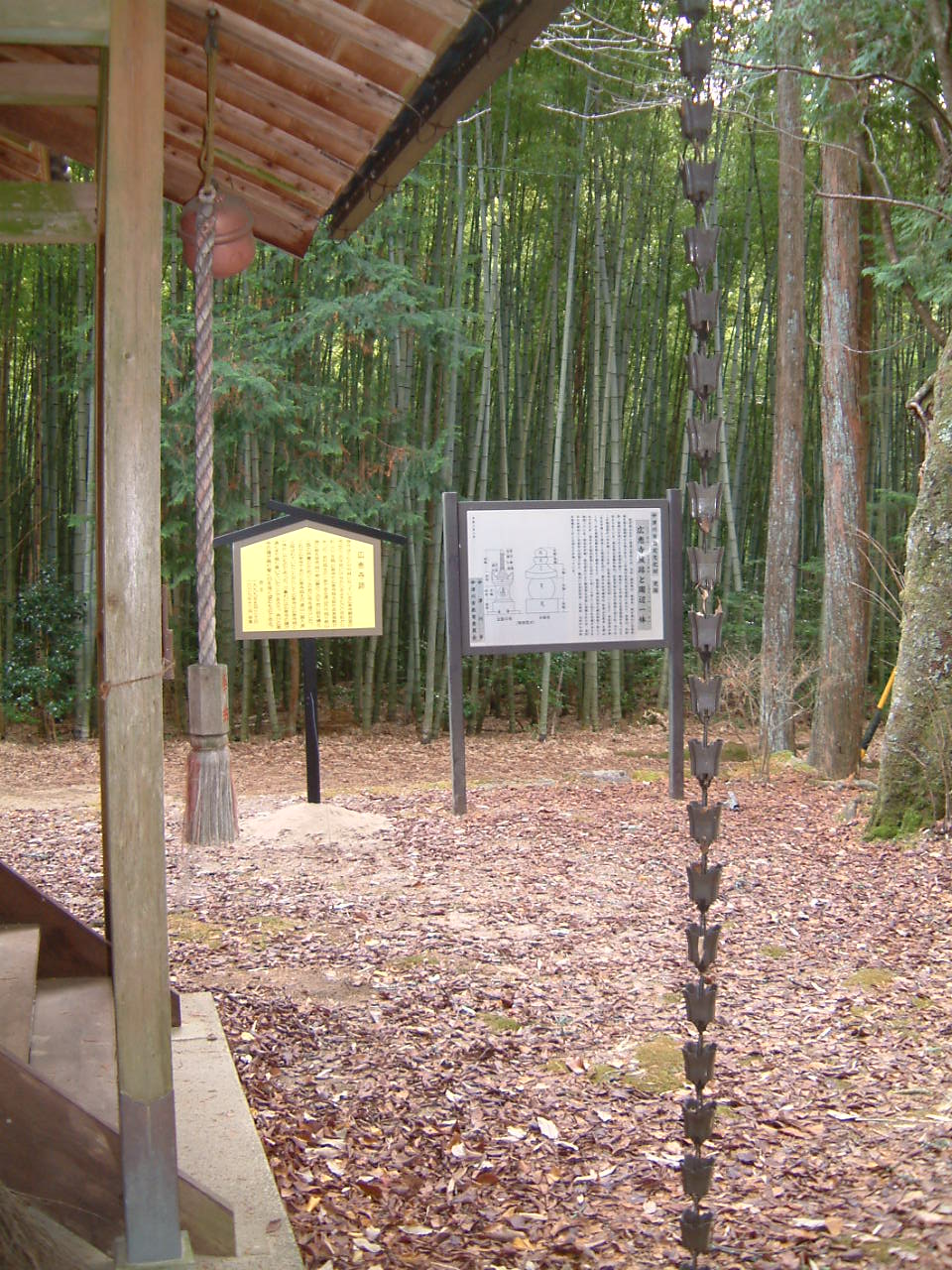 |
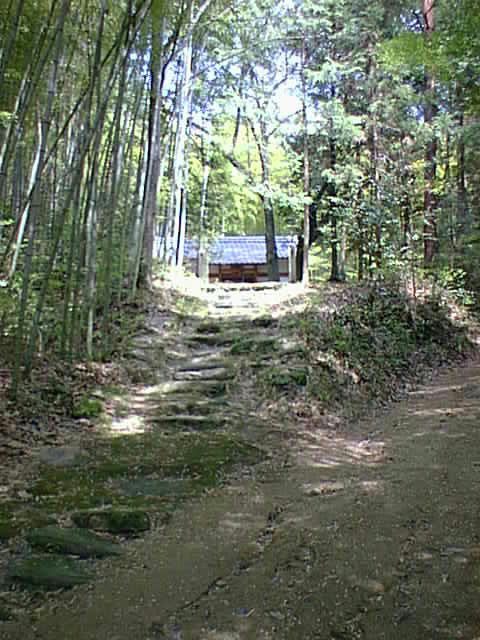 |
| Koegi Temple Ruins and Banboo Wood | Koeji Temple Ruins |
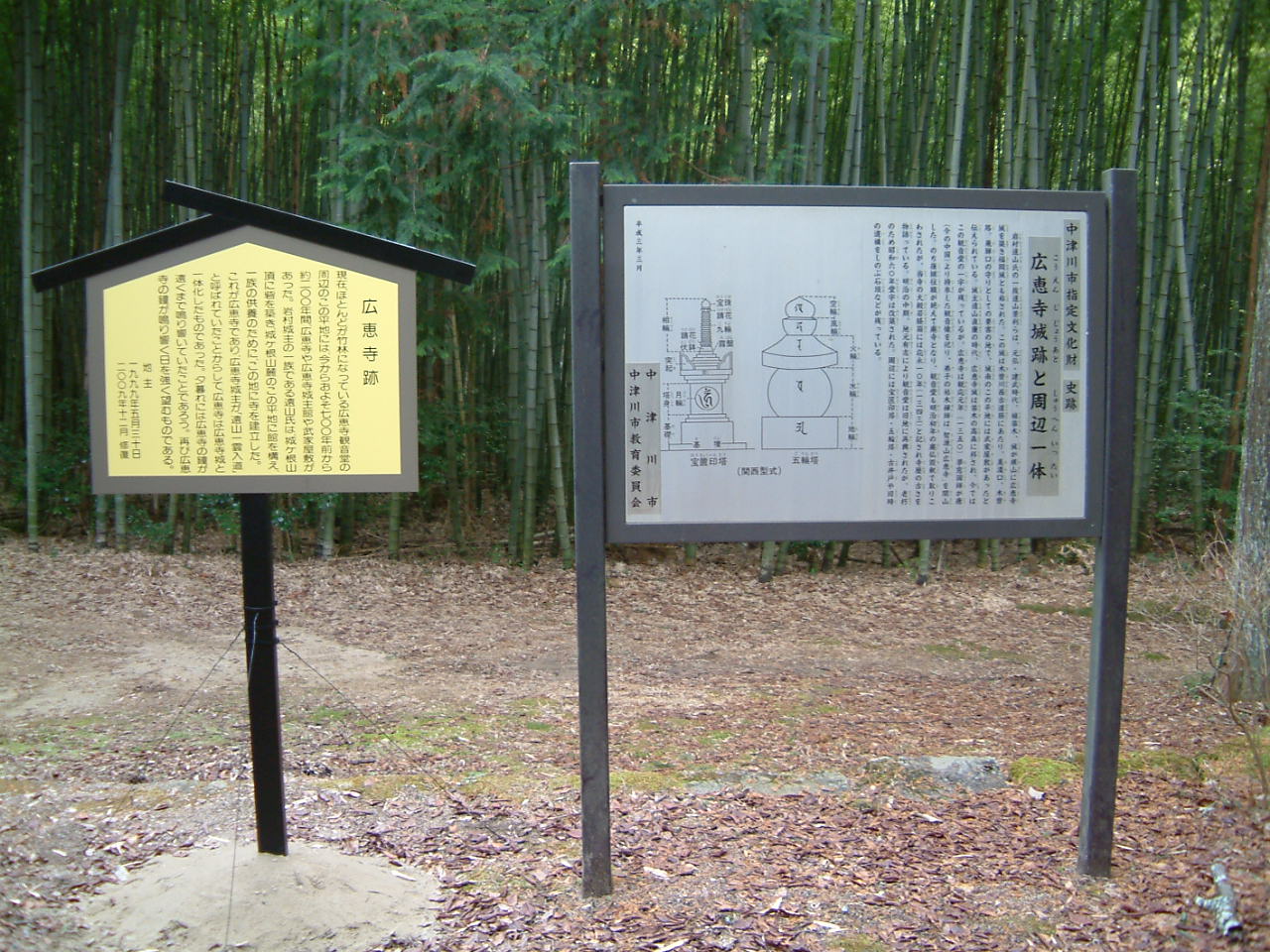 |
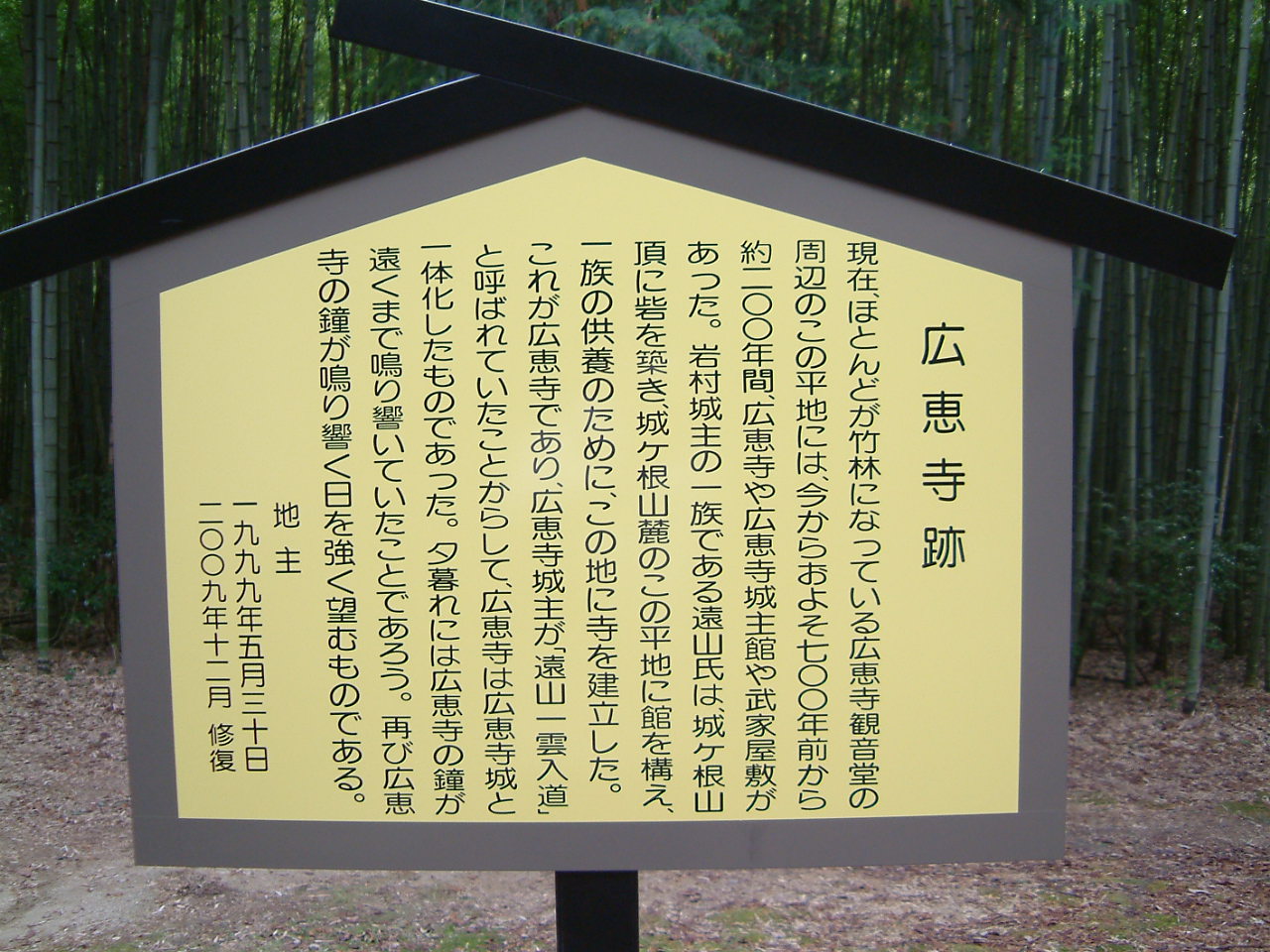 |
| Koeji Temple Ruins Standing Board | Koeji Temple Ruins Standing Board |
 |
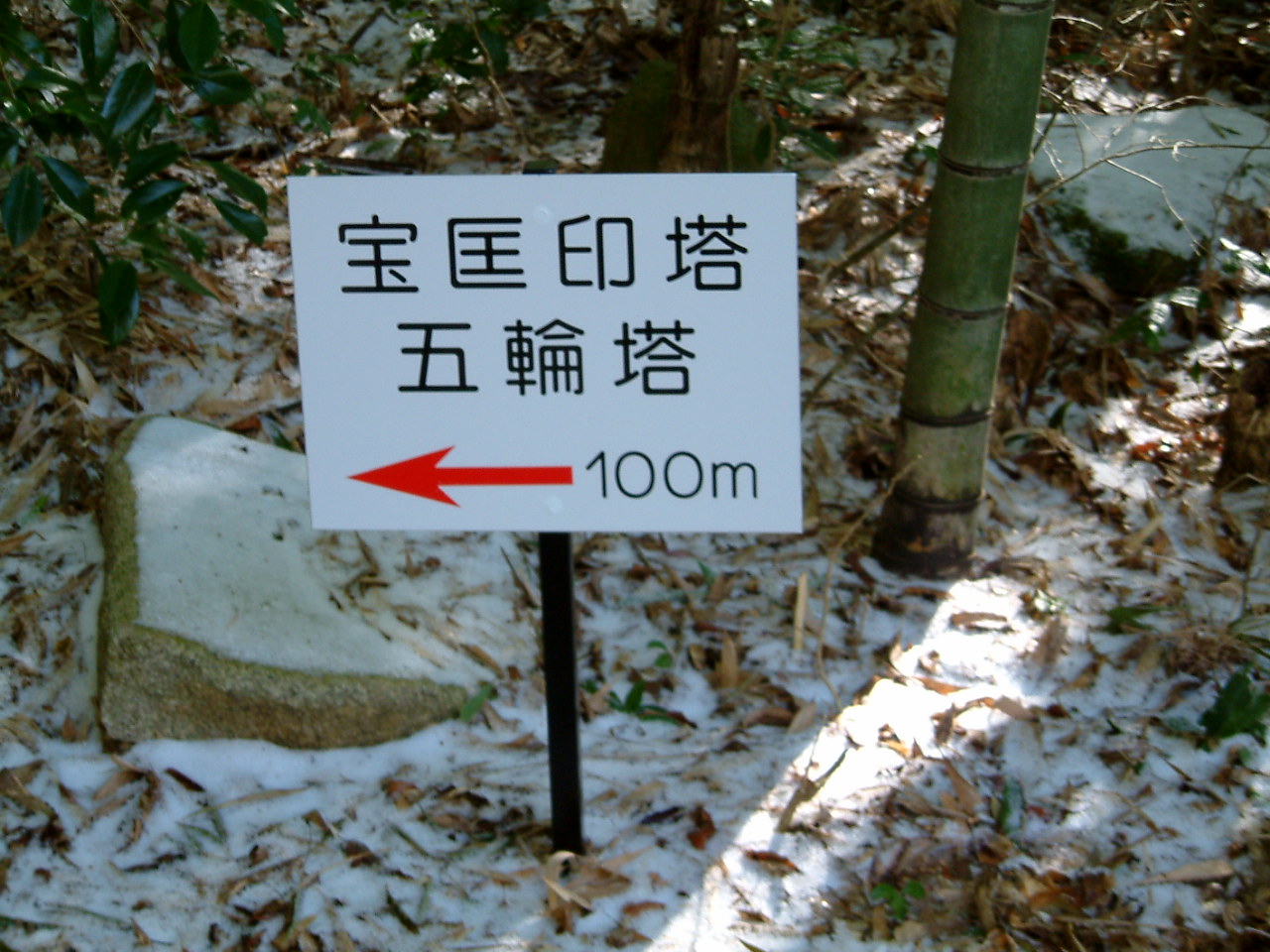 |
| Garden Pond Ruins Information Signboar | Hokyointo Tower and Gorinto Tower Information Signboard |
| Soseki Muso , the founder of Tajimi Kokeizan Temple , reached the foot of Mt. Koeji on the way to nations. Since this place resembled Mt. Koezan in Tang (China) , a temple was built in 1350 by his disciple Syoei Koboku as a sacred place. The Kannon statue brought from Tang was enshrined and called Chigenzan Koeji Temple. In the Edo period , the successor priests disappered , and it became an abandoned temple , leaving only Kannon-do. However , it was also demolished by Abolition of Buddha in the early Meiji era. The year 1403 is written on thhe Heart Sutra box at that time , which shows the age of the temple. In the middle of the Meiji era , Kannon-do was rebuilt in the old land by local volunteers. After that , it was rebuilt in 1985 due to its deterioration. |
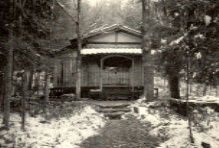 |
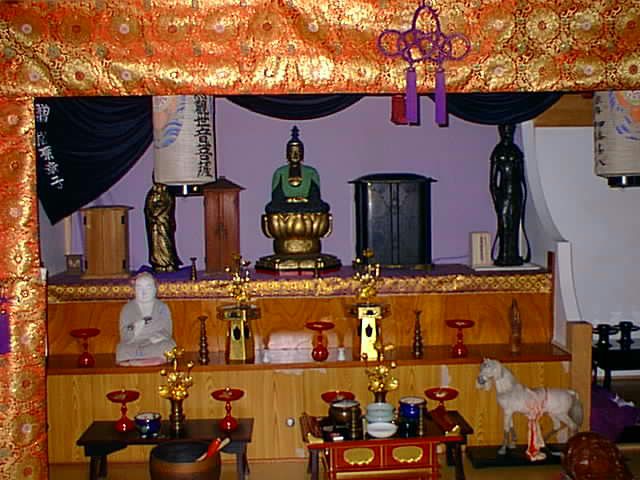 |
| Old Kannon-do Built in Koegi Temple Ruins | Inside Kannon-do |
| In addition , according to the calendar of Fukuoka Village , which was copied in 1847 , it is written that Kannon-do was rebuilt in 1695 by Yogenin , Tomoharu Toyama's mother , the 4th lord of Naegi clan. The principal image of Koeji Temple was enshrined in Kannon-do for a long time , but it is said that it was entrusted to the temple in Tsukechi-cho when the Abolition of Buddha was carried out by the Naegi clan in the early Meiji era. But now the temple is not clear either. The wooden statue of the Kanzeon Bodhisativa , which is currently enshrined , was renewed by Uenaegi Kobo-ko as the founder in 1956 and soliciting donations. |
 |
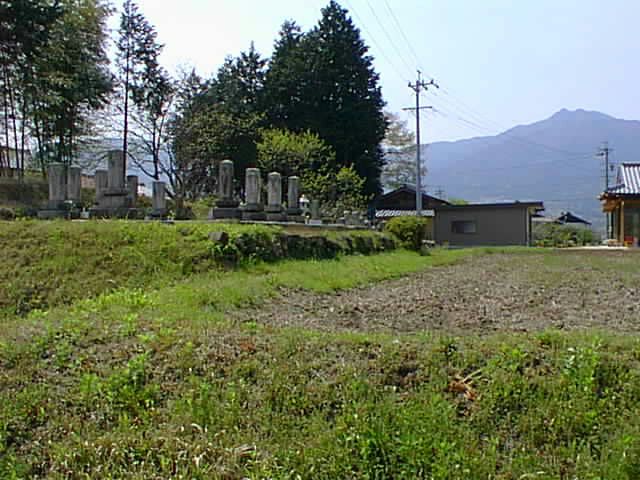 |
| Moat and Earthwork Ruins of Henkoji Temple Ruins | Henkoji Temple Ruins |
| Henkoji Temple was founded in 1651 by Issyu priest of Naegi Unrinji Temple
for the 7th anniversary of Jyushouin , the mother of the third feudal lord.
Chief retainer , Hachibei Tanahashi also made an effort to revive the temple
as a substitute for the once abandoned Koeji Temple. The name of the temple
, "Sufukuzan Henkoji" is the name of the temple divided from
two letters of "Fuku ", "Oka" , and Henkoji Temple
was ranked first in the temples attached to Naegi Unrinji Temple. The opening of the Henkoji Temple was done by Syugaku Genho priest , and after that , the 10th generation Tairyo priest saw the prosperity of the Buddhist gate. However , in 1870 , the temple was abondoned due to the Abolition of Buddha by the Naegi clan , and from the 11th generation , he began to give his surname Kataoka. Currently , the statue of Syugaku priest's ancestor is being held at the Kataoka family. Around Henkoji Temple ruins , there is Namiamidabutsu Myogoto Tower , 33 Kannon stone statues , tombstones of successive priests , etc. The place where Sankaibanreito Tower was built was the site of the temple gate at that time. Looking at the drawings , you can see that it was a majestic building. In addition , around Henkoji Temple ruins , a part of the moat and earthworks that remains the remnants of the samurai hall of the medieval Koeji Castle remains. Presuming that Henkoji Temple , which was built in the Edo period , did not need earthworks or moats , it is probable that Henkoji Temple was erected on the site of a medieval samurai residence surrounded by moats and earthworks in all four directions. By the way , the name of the house adjacent to the earthworks in the photo is called "the lord's field" and the name of the house over there is called "the lord's field below". Considering the scale of the eathworks , there woild have been the Koeji caste lord's house or a fairly large old mansion of the chief vassal of Koeji Castle in the place of Henkoji Temple. |